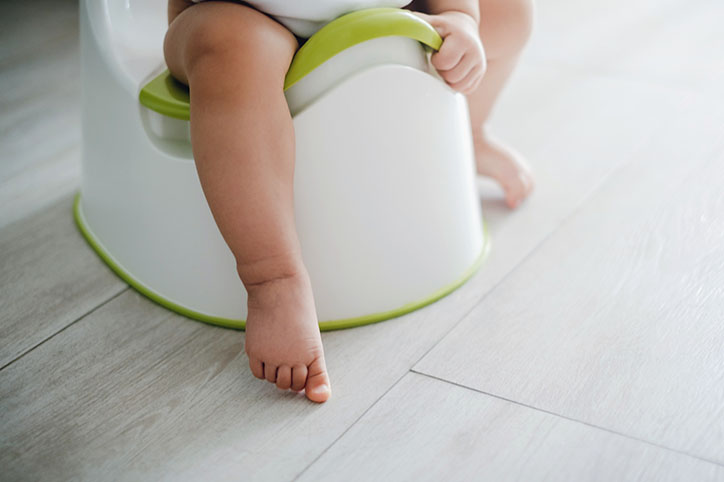Successfully potty training your toddler over a weekend? Sounds too good to be too, doesn’t it? Not necessarily. For most parents, potty training can be a long and frustrating process. But fans of the 3-day potty training method say it doesn’t have to be that way.
How it works: Your toddler goes cold turkey with the diapers, you quarantine yourselves in your home for three days (no exceptions), you arm yourself with a potty, liquids, snacks, rewards, 20-30 pairs of “big kid” underwear, and then prepare yourself for many accidents. All the while, say to your child “Tell me if you need to use the potty” all day and then watch the like a hawk.
Aside from that, you and your child can go about your regular activities…inside. And as you do so, keep saying, “Tell me if you need to use the potty.” Repeat this every 5-10 minutes. “Tell me if you need to use the potty. Tell me if you need to use the potty. Tell me if you need to use the potty.” Then, the moment you see pee or poo happening, pick up your child and race to them the bathroom. Plop them on the potty chair or toilet and if you make it in time, make a big deal of it. Cheer, give a reward, call your family and report very loudly over the phone what the celebration is about. Make them really proud of themselves.
Here’s what else you should know about the 3-Day potty training method:
Patience is key.
Although proponents of the 3-day potty training method specifically suggest that you need to do it in three days, it doesn’t mean it is limited to three and you are failure for going beyond that. There are some instances that after the training, your child’s routine is disrupted and she falls back into old habits. Yes, this is upsetting, you may want to cry. What went wrong? You’ve done everything. Perhaps, there is nothing wrong with the approach, perhaps you just have to understand your child. Disruptions in her potty training often happen when the family is traveling or welcome a new sibling, or the family is simply having a rough day.
How ready is he or she?
Allow your child to be in control. Don’t push her to start potty training if she is not yet ready. How can you tell she is ready to hit the potty or toilet on her own? There are physical, mental and emotional cues that you should consider. When she starts showing signs like telling you she has pooped, letting you know she wants to pee or showing discomfort wearing soiled diapers, perhaps it is time to show her how to sit on the potty. You should also note that the 3-day method is probably not the right fit for every family, so consider whether a more laid-back, long term approach better suits your needs.
Reward consistently.
Most versions of the 3-day method encourage the use of rewards every time your child make it to the potty on time or uses the potty when taken there. Small toys, treats and stickers are all options, depending on what you think will motivate your child. Keep these stashed in the bathroom, or near the potty, so the association between reward and action is clear.
Involve the whole family.
It’s a long a grueling few days. Share the process with your spouse and other caregivers, such as babysitters, nannies, and relatives. Take shifts or stay together and support each other during the process. It is important that all adults are involved in the process and that using the toilet does not become something that is done only with one adult in the family. By sharing the responsibility, your child learns that they must use the toilet with everyone, not just in certain situations or with specific adults.








